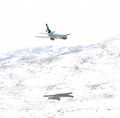Archivo:Dc10erebus.png

Tamaño de esta previsualización: 800 × 546 píxeles. Otras resoluciones: 320 × 218 píxeles · 640 × 437 píxeles · 818 × 558 píxeles.
Ver la imagen en su resolución original (818 × 558 píxeles; tamaño de archivo: 159 kB; tipo MIME: image/png)
Historial del archivo
Haz clic sobre una fecha y hora para ver el archivo tal como apareció en ese momento.
| Fecha y hora | Miniatura | Dimensiones | Usuario | Comentario | |
|---|---|---|---|---|---|
| actual | 04:52 20 nov 2012 |  | 818 × 558 (159 kB) | Anynobody~commonswiki | oops, last one was the wrong one... |
| 20:44 19 nov 2012 |  | 1237 × 1215 (662 kB) | Anynobody~commonswiki | hypothetical view from below, with air glow, sub-surface scattering and cloud interaction on DEM of Ross Island | |
| 19:54 19 abr 2009 |  | 2080 × 1224 (611 kB) | Anynobody~commonswiki | better clouds and environment | |
| 07:25 4 dic 2008 |  | 1620 × 1200 (309 kB) | Anynobody~commonswiki | Enhanced | |
| 05:13 28 sep 2008 |  | 1620 × 1280 (550 kB) | Anynobody~commonswiki | modeled Ross island, included Blender lighting and shadow effects to recreate approximation of actual whiteout effect | |
| 04:03 22 may 2008 |  | 3200 × 2400 (2,22 MB) | Anynobody~commonswiki | fixed exhaust | |
| 01:17 22 may 2008 |  | 3200 × 2400 (2,27 MB) | Anynobody~commonswiki | new model, actually modeled Erebus rather than simply drawing it | |
| 23:31 5 feb 2008 |  | 1600 × 1200 (1,09 MB) | Anynobody~commonswiki | {{Information |Description=Air New Zealand Flight 901 approaching Mt. Erebus |Source=self-made |Date= ~~~~~ |Author= Anynobody |Permission= |other_versions= }} |
Usos del archivo
La siguiente página usa este archivo:
Uso global del archivo
Las wikis siguientes utilizan este archivo:
- Uso en en.wiki.x.io
- Uso en fr.wiki.x.io
- Uso en ja.wiki.x.io
- Uso en ko.wiki.x.io
- Uso en oc.wiki.x.io
- Uso en ru.wiki.x.io
- Uso en zh.wiki.x.io
